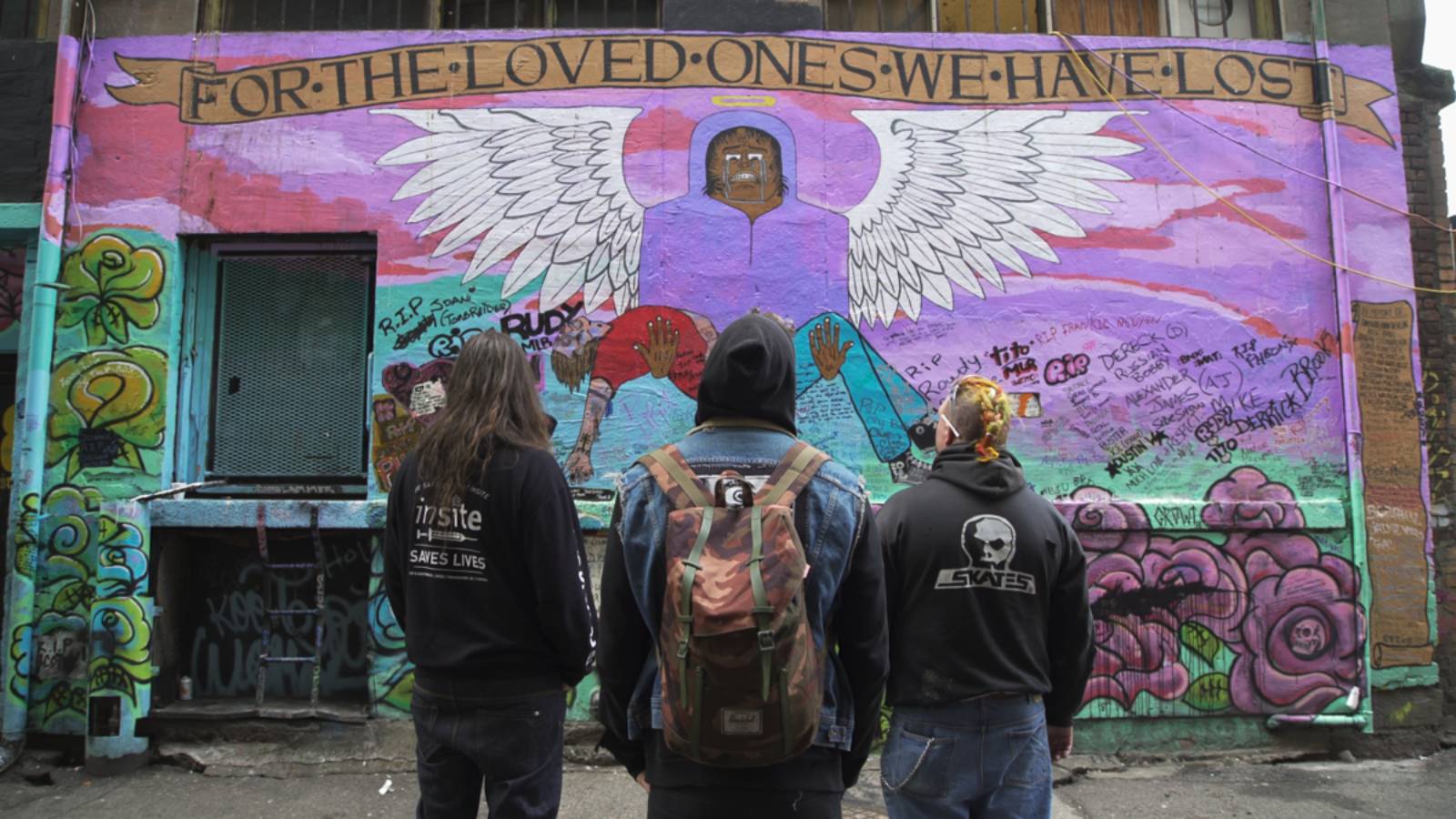A kind of sequel to his short film Haven, which concerned a radical treatment program that offered drug users free medical-grade heroin, Colin Askey’s Love in the Time of Fentanyl is not an easy film to approach. The work of “harm reduction”––a concept that seems to have found some acceptance in urban centers throughout Canada, including Vancouver and Toronto (as chronicled in Hugh Gibson’s The Stairs)––the idea begins with the assumption that if addicts are going to use regardless, why not give them a clean, safe space to take drugs and prevent overdoses?
The Downtown Eastside clinic in Vancouver began as a pop-up and has since moved into a storefront run by Ronnie, a bearded Gen X-er who earns the name “Narcan Jesus.” He remains haunted by those he can’t save and the weight of the work. Initially a skeptic of harm reduction, Ronnie now leads a clinic staffed by former and current users in various states of recovery while also worrying the work is taking its toll on his own mental health.
Executive produced by Sean Baker, Love in the Time of Fentanyl is told mostly in a straightforward vérité, exploring the OPS (Overdose Prevention Society) office with several volunteer employees sharing their experiences. Early in the film, Ronnie and senior staff lead an orientation telling staffers they can use only a “maintenance” level while on their shift––after all, they need to be ready to snap into action to prevent an overdose death. OPS offers staff a paid stipend to help steer users away from other ways they make money to feed their habits.
The stories are quite candid, including an older man whose wife passed and did not realize he had become physically dependent upon drugs until it was too late. New drugs laced with fentanyl of course make detoxing harder to do without medical assistance, leading to deeper, darker cycles of abuse. A back alleyway mural commemorates those who didn’t make it; it’s running out of space.
For some, Love in the Time of Fentanyl may be frustrating—it doesn’t offer easy answers, but rather a patchwork that admits the war on drugs is lost, partly because of how poverty and mental health are marginalized even in first-world countries. You really cannot fix one without broader changes and a larger social net. The film itself as tender as it is ugly––Askey doesn’t shy away from scenes of explicit drug use, instead he finds speakers like OPS manager Dana who are quite candid about their use and, as veterans of this cycle, they know when it’s time to get more help. With Ronnie they become advocates for a 24-hour-a-day OPS operation, haunted by those they could not save and who instead froze to death before the clinic while overdosing.
Plunging us deep into the center of the chaos, Askey’s film finds a natural rhythm that comes with any workday. OPS is a community and becomes dedicated to doing the work, telling their story, and quantifying success. As ugly as the situation is, Ronnie remains committed to work he finds to be the most compassionate approach to deal with an untenable situation. The film makes a strong case for harm reduction as one interim measure, along with needle exchanges and advocating for safer drugs. In the short term, a victory is keeping another name off the back alley’s tribute wall.
Love in the Time of Fentanyl screened at DOC NYC 2022.

